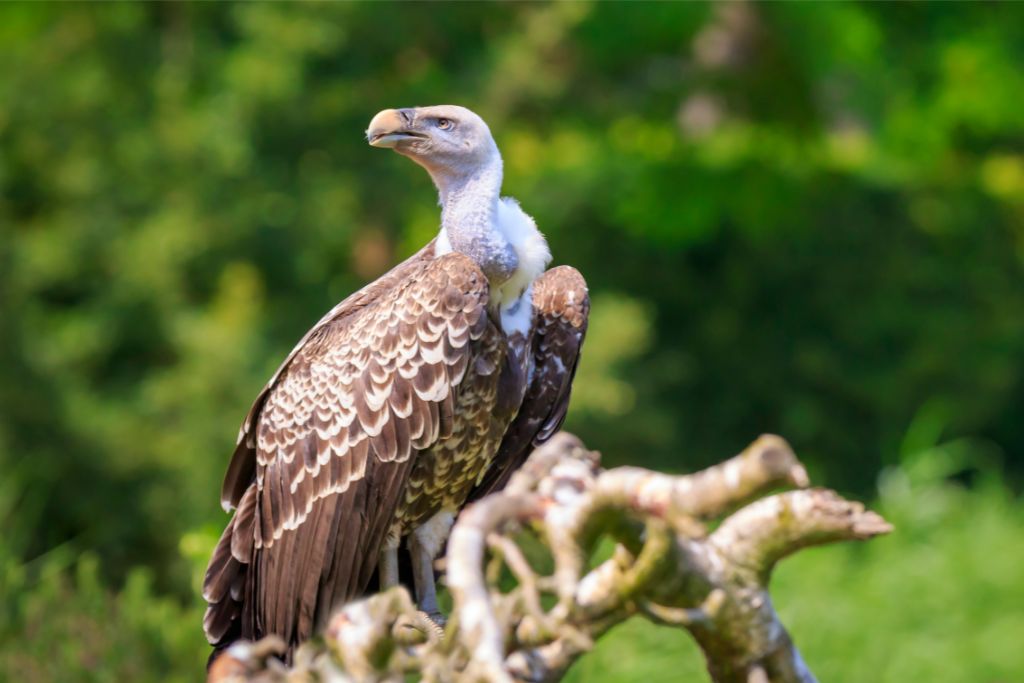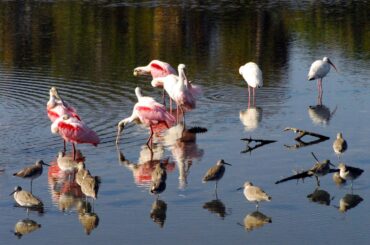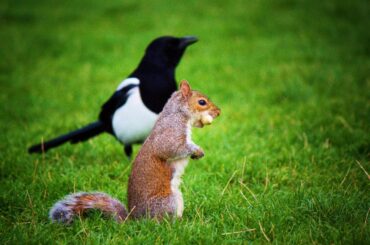Have you ever wondered which birds soar the highest in the sky? Imagine a majestic creature, wings outstretched, floating smoothly across the clouds, defying gravity with every beat.
In the avian world, a group of remarkable fliers have mastered the art of reaching great heights. These birds can fly at great altitudes that most other birds cannot.
Among them, one particular species stands out with its astonishing flight capabilities. This exceptional bird can fly at altitudes of over 37,000 feet (10,000 meters)! That’s higher than the peak of Mount Everest, the tallest mountain on Earth. Read on as we explore the world’s highest-flying birds and their amazing feats.
What Does the Highest Flying Bird Look Like?
Envision a majestic creature gracefully gliding through the air. This remarkable bird has a wide wingspan, allowing it to catch even the tiniest air currents.
Its feathers are beautifully colored, reflecting the sunlight like a shimmering rainbow. These feathers are decorative and help the bird reach such heights.
The highest-flying bird possesses a streamlined body, perfectly designed for flying at great heights. Its slender and aerodynamic shape reduces air resistance, allowing it to glide effortlessly through the sky.
Its beak is sharp and pointed, helping it slice through the air as it searches for its prey from above. Its keen eyesight lets it spot even the smallest details from high up in the clouds. It’s truly a marvel of nature, capable of reaching altitudes that no other bird can match.
1. Ruppell’s Griffon Vulture — 37,000 Feet
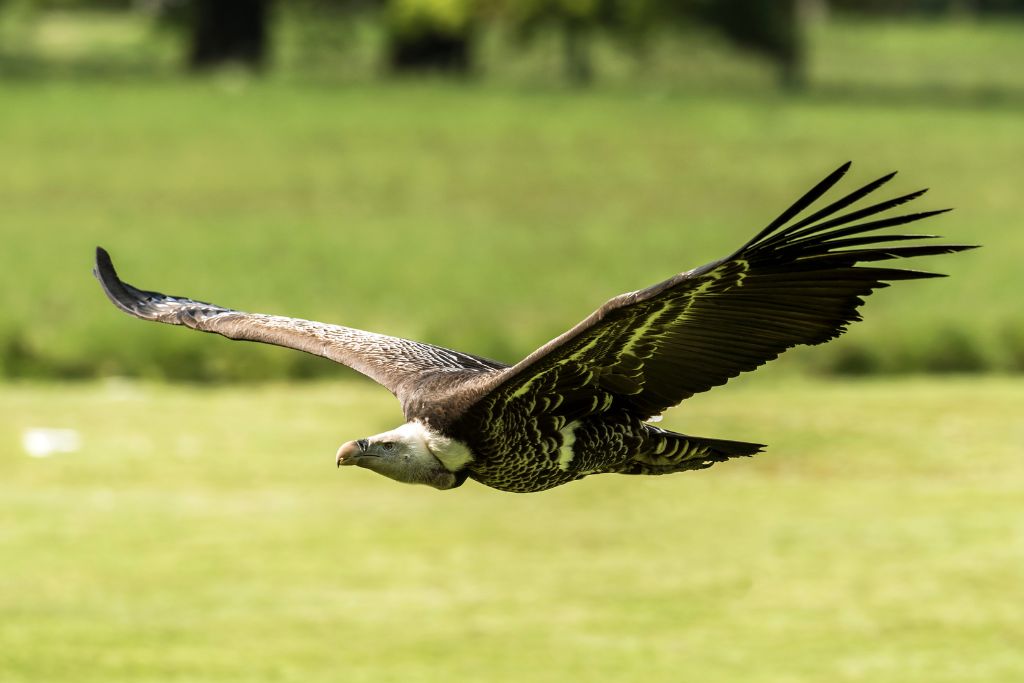
- Kingdom: Animalia
- Phylum: Chordata
- Class: Aves
- Order: Accipitriformes
- Genus: Gyps
- Species: G. rueppelli
Ruppell’s griffon vulture (Gyps rueppellii) is the highest-flying bird. These amazing animals can soar to 37,000 feet and flourish in their unique environment.
The wingspan of the Ruppell’s griffon vulture makes it the largest of all vultures. Their 9.8-foot wings help them float smoothly and travel far. These vultures’ dark brown feathers, white underbelly, and bald heads help them stay clean while eating carrion.
They are highly adapted to their high-altitude habitat. They have strong respiratory systems allowing them to breathe in thin air at such extreme heights. Their keen eyesight lets them spot carcasses from great distances while soaring in the sky. They are endemic to the dry, mountainous regions of sub-Saharan Africa.
Regarding nesting and breeding behaviors, Ruppell’s griffon vultures build their nests on cliffs or high trees. They pair off for life and commit to one another.
Both parents are involved in raising the children. Usually, only one egg is laid, and the parents take turns caring for it for the next 55 days until it hatches. The fledgling then spends several months in the nest, fed by both parents until it becomes independent.
Interesting facts about Ruppell’s griffon vultures include their incredible lifespan. These birds are resilient and adaptable, living up to 40 years in the wild. They clean up carrion and prevent sickness as scavengers.
Despite their gigantic size, Ruppell’s griffon vultures can have incredible altitudes due to their ability to ride thermals and updrafts.
2. Common Crane — 33,000 Feet
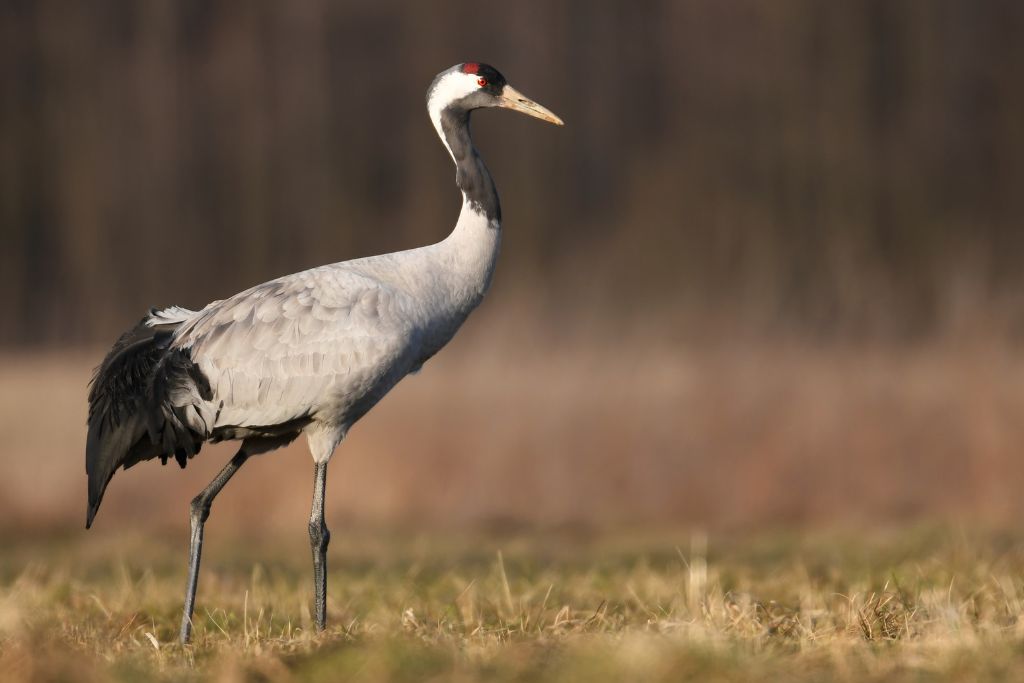
- Kingdom: Animalia
- Phylum: Chordata
- Class: Aves
- Order: Gruiformes
- Genus: Grus
- Species: G. grus
The common crane (Grus grus) is a rare bird that can migrate to 33,000 feet. These exquisite birds are intriguing in the skies due to their long legs, graceful necks, and striking plumage.
Characterized by their overall gray coloration and contrasting black and white patterns on their heads, common cranes are medium-sized birds across Europe, Asia, and Africa. During their extensive migrations, their 7.5-foot wingspan lets them fly far.
They have well-adapted bodies that enable them to withstand the challenges of high-altitude flight. Their mighty wings provide efficient lift, while their long necks and legs help them maintain stability during flight. These birds eat plants, insects, and small vertebrates in wetlands, marshes, and farms.
When it comes to nesting and breeding behaviors, common cranes form lifelong pair bonds. They construct large nests on the ground, typically located near bodies of water. The female crane lays 2 eggs, and both parents take turns incubating them for about a month. After hatching, parents teach their young foraging and flying skills.
These birds can live for up to 30 years; some individuals have been known to reach even older ages. They migrate in vast flocks and fly in V-shaped formations to take advantage of group aerodynamics. Their unusual bugling sounds fill the sky with lovely harmonies, adding to their appeal.

3. Bar-Headed Goose — 29,000 Feet
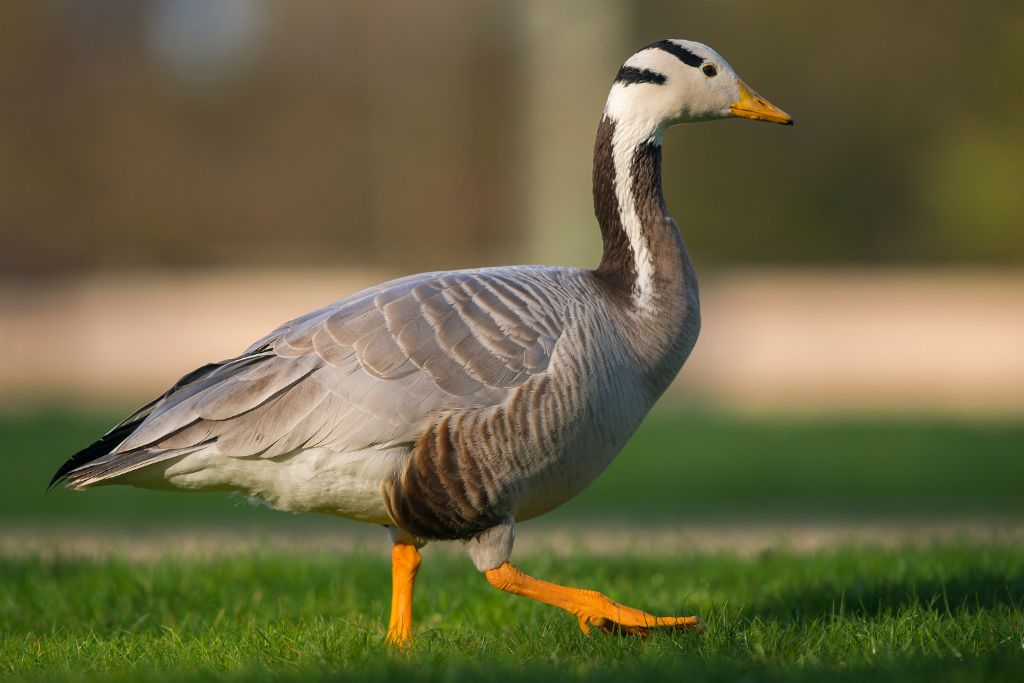
- Kingdom: Animalia
- Phylum: Chordata
- Class: Aves
- Order: Anseriformes
- Genus: Anser
- Species: A. indicus
The bar-headed goose (Anser indicus) can fly up to 29,000 feet. These geese can fly high to withstand the harsh Himalayas and other hilly places.
Bar-headed geese are medium-sized birds with a striking appearance. They have a white head and neck with dark bars, a grayish-brown body, and distinctive black bars on their wings. Their wingspan can reach up to 5.9 feet, allowing them to cover long distances during their migrations.
These geese have several adaptations that enable them to survive in high-altitude habitats. They have larger lungs, more oxygen-carrying blood, and modified hemoglobin to take oxygen from thin air efficiently. Their feathers have excellent insulation properties, protecting them from freezing temperatures at high altitudes.
The high-altitude regions of Tibet and Mongolia are home to the native population of bar-headed geese. They typically choose remote areas near lakes and rivers for nesting.
During the breeding season, they form pairs and build nests on the ground using plant material and feathers. The female goose lays around 4 to 6 eggs, and both parents take turns incubating them for about a month.
These geese fly through the Himalayas to reach their wintering sites in India and Southeast Asia. They use endurance and navigation to cross dangerous mountain routes. Because of their ability to adapt and survive, bar-headed geese can soar to such great heights.

4. Whooper Swan — 27,000 Feet
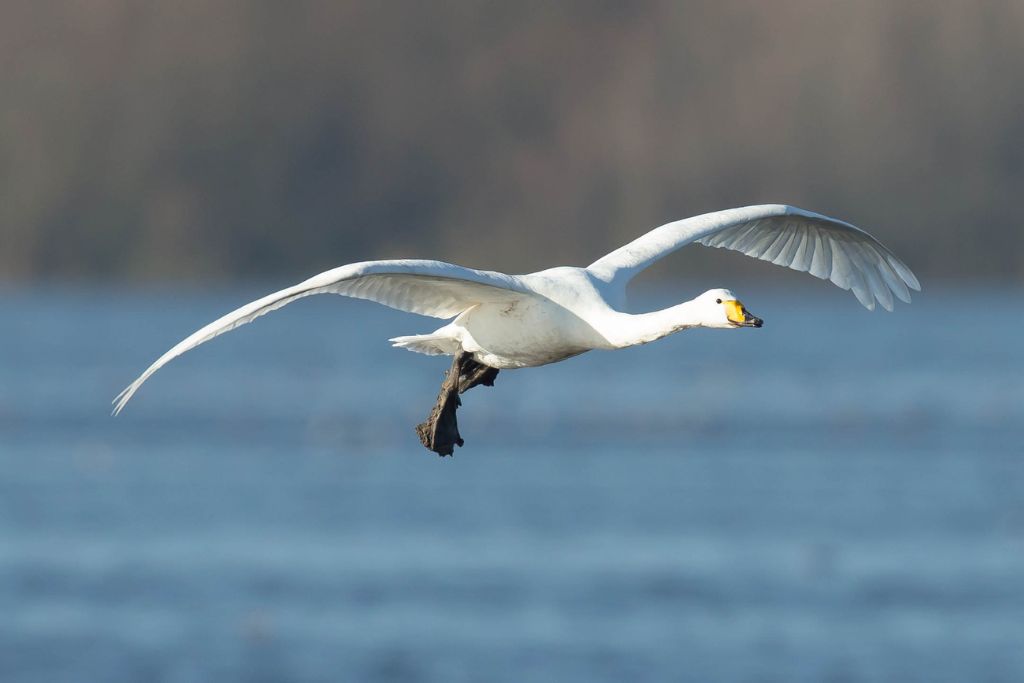
- Kingdom: Animalia
- Phylum: Chordata
- Class: Aves
- Order: Anseriformes
- Genus: Cygnus
- Species: C. cygnus
When it comes to soaring high in the sky, the whooper swan (Cygnus cygnus) takes the crown, reaching heights of up to 27,000 feet. These majestic birds are known for their impressive flight records and fascinating characteristics.
Characterized by their graceful appearance, whooper swans are large and elegant birds. They have long, slender necks, vibrant white feathers, and striking black beaks. These swans have a wingspan of about 7 feet, allowing them to navigate the vast skies easily.
To adapt to high-altitude flight, whooper swans possess certain features that aid their remarkable ability. They can fly effortlessly due to their hollow bones and strong wings. Their broad wings allow efficient gliding, conserving energy during long-distance flights.
Whooper swans typically inhabit wetland areas, like lakes, ponds, and marshes. These habitats provide them with an abundant food supply and suitable nesting sites. They build enormous plant nests near the water throughout the spring and summer breeding season.
These monogamous swans pair for life and nest and reproduce. They engage in elaborate courtship displays, including synchronized head-bobbing and graceful swimming patterns. The female usually lays around 4 to 7 eggs, and both parents actively participate in the incubation process.
Their loud, resonant honking calls are interesting facts about whooper swans. Some of these birds migrate thousands of miles annually. Their typical lifespan is 20 years, but some have lived up to 30.

5. Alpine Chough — 26,500 Feet
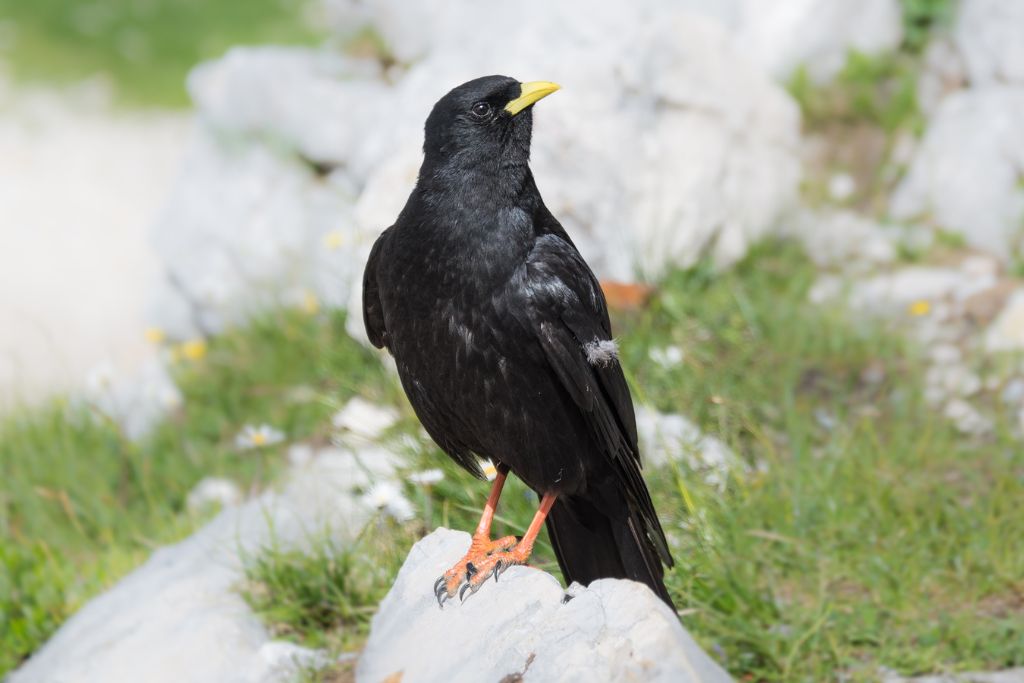
- Kingdom: Animalia
- Phylum: Chordata
- Class: Aves
- Order: Passeriformes
- Genus: Pyrrhocorax
- Species: P. graculus
Another high-flying bird worth seeing is the Alpine chough (Pyrrhocorax graculus). These amazing birds can fly up to 26,500 feet and survive in severe conditions.
With its glossy black feathers and distinctive yellow beak, the Alpine chough is a visually striking bird. They have long, pointed wings and a streamlined body, enabling them to maneuver effortlessly through the air. These choughs are highly social and often travel in large flocks, showcasing their agility and aerial acrobatics.
To adapt to their high-altitude habitat, Alpine choughs possess certain specialized features. Their excellent respiratory mechanism helps them obtain oxygen from sparse air at high heights. They have powerful chest muscles for mountainous flying.
Alpine choughs are commonly found in Alpine and subAlpine habitats, such as rocky slopes and cliffs. They can eat insects, seeds, and carrion in these habitats and avoid predators. They are also known to visit ski resorts and mountain huts, where they scavenge for food scraps left by humans.
In terms of nesting and breeding behaviors, Alpine choughs typically build their nests in rock crevices or on ledges. The female lays a clutch of 3 to 5 eggs, which both parents take turns incubating. Once the chicks hatch, both parents actively care for them, regurgitating food to nourish their offspring.
Playing games, including swooping and chasing flights through the air, is typical for Alpine choughs. They are highly intelligent birds and have been observed using tools to access food. They can live up to 20 years, but the typical lifespan is 10.
6. Bearded Vulture — 24,000 Feet
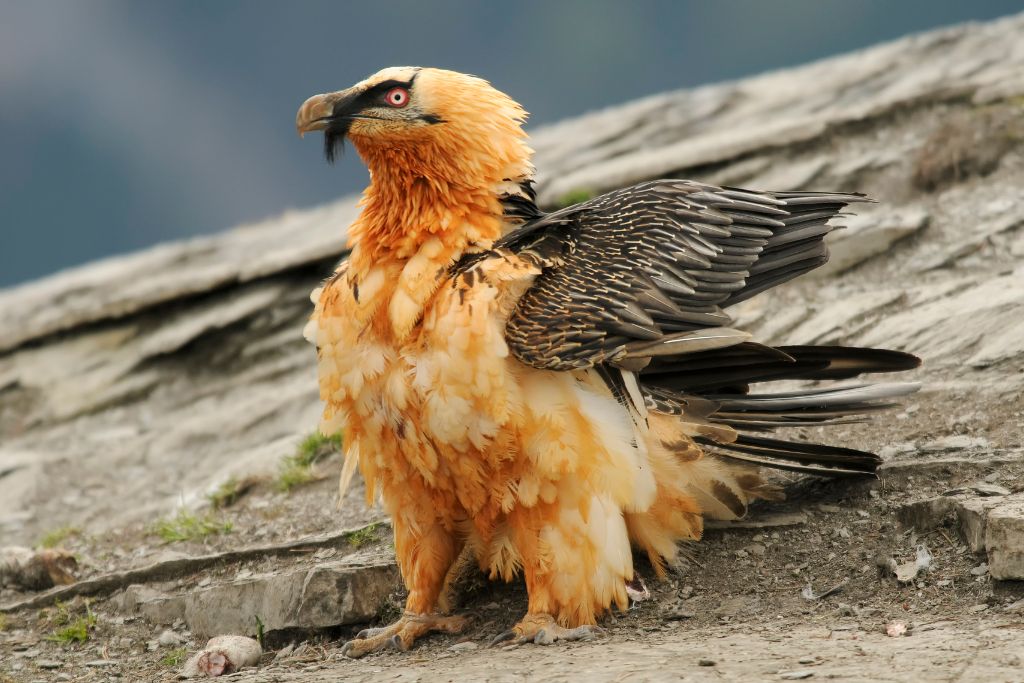
- Kingdom: Animalia
- Phylum: Chordata
- Class: Aves
- Order: Accipitriformes
- Genus: Gypaetus
- Species: G. barbatus
The stunning bearded vulture (Gypaetus barbatus), sometimes known as the lammergeier, can soar to 24,000 feet. This vulture is one of nature’s most outstanding aerialists.
The bearded vulture is a remarkable bird with an enormous wingspan and rusty brown coloring. One of its most striking features is the feathered tuft on its chin, resembling a beard, hence its name. Their 8-foot wingspan helps these vultures glide through their hilly habitat.
Adapted to their high-altitude habitat, they possess several remarkable characteristics. They have unique adaptations to obtain bone marrow, their main food supply. They break the bones and devour the marrow by dropping them from great heights.
Mountainous areas, especially those with cliffs and deep valleys, are typical homes for bearded vultures. They can nest and find plenty of bones from other animals in these settings. They build enormous nests of sticks and plants on lonely cliff ledges to rear their young.
During the breeding season, they engage in elaborate courtship displays involving aerial acrobatics and vocalizations. The female typically lays a single egg, and both parents take turns incubating it for about two months. Once hatched, the chick relies on its parents for food and protection until it becomes independent.
Interesting facts about bearded vultures include that they can glide smoothly on thermals for hours without flapping their wings, in their quest for food. These vultures dispose of animal carcasses, preventing the spread of disease. One of the longest-lived bird species, bearded vultures can live up to 45 years.

7. Common Swift – 21,300 Feet
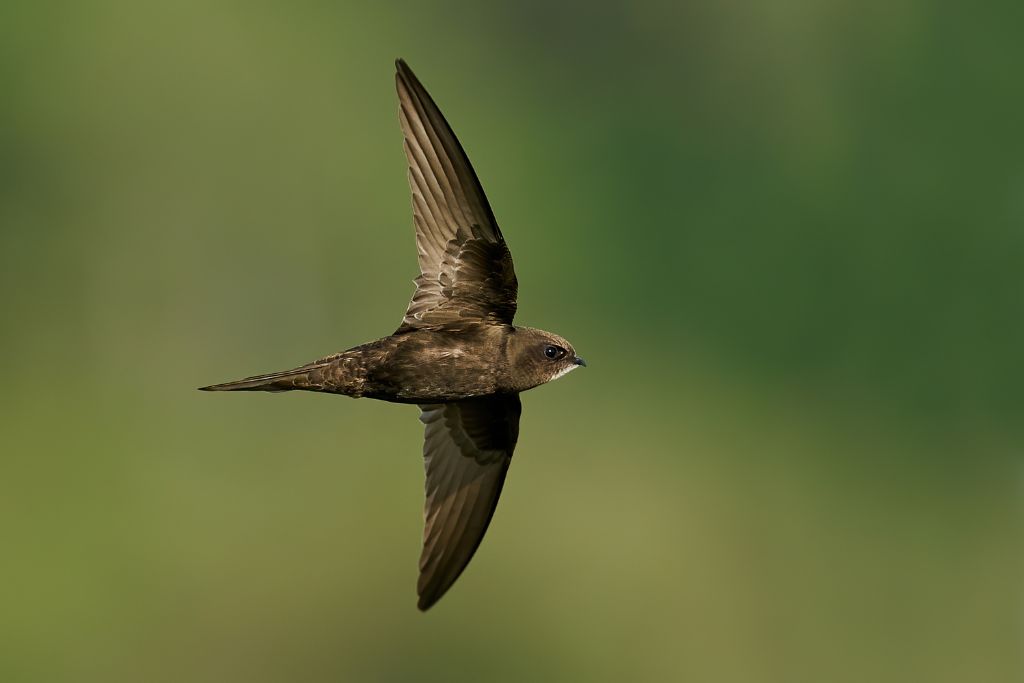
- Kingdom: Animalia
- Phylum: Chordata
- Class: Aves
- Clade: Strisores
- Order: Apodiformes
- Genus: Apus
- Species: A. apus
Common swifts (Apus apus) are remarkable birds known for their extraordinary flying abilities. These sleek, long-distance migrants may reach 21,300 feet.
The common swift (European Swift) is a medium-sized bird averaging 16 cm. They have a dark brown body with a pale throat and underparts. Their large, scythe-like wings and forked tails help them fly agilely.
Swifts have a unique adaptation that enables them to spend most of their lives in flight. They possess short legs and strong wings, ideally suited for their aerial lifestyle. During their aerobatic performances, common swifts make shrill noises.
These birds are often found in open habitats, including cities, fields, and forests. They migrate to Africa in the winter to take advantage of the abundant insect populations.
The social nature of the common swift makes for large nesting colonies. They construct their nests in crevices and cavities of buildings, cliffs, or even trees.
Remarkably, they use their saliva to glue feathers, twigs, and other materials to build their nests. They lay a clutch of 2 to 3 eggs, and both parents take turns incubating them. After hatching, the chicks are fed a diet of insects caught in mid-air by their skilled parents.
Swifts spend the vast majority of their life in flight. These incredible birds even sleep and mate on the wing. They migrate from Europe to Africa and back every year.
They have an average lifespan of around 4 to 5 years. Some individuals have been known to live up to 14 years.
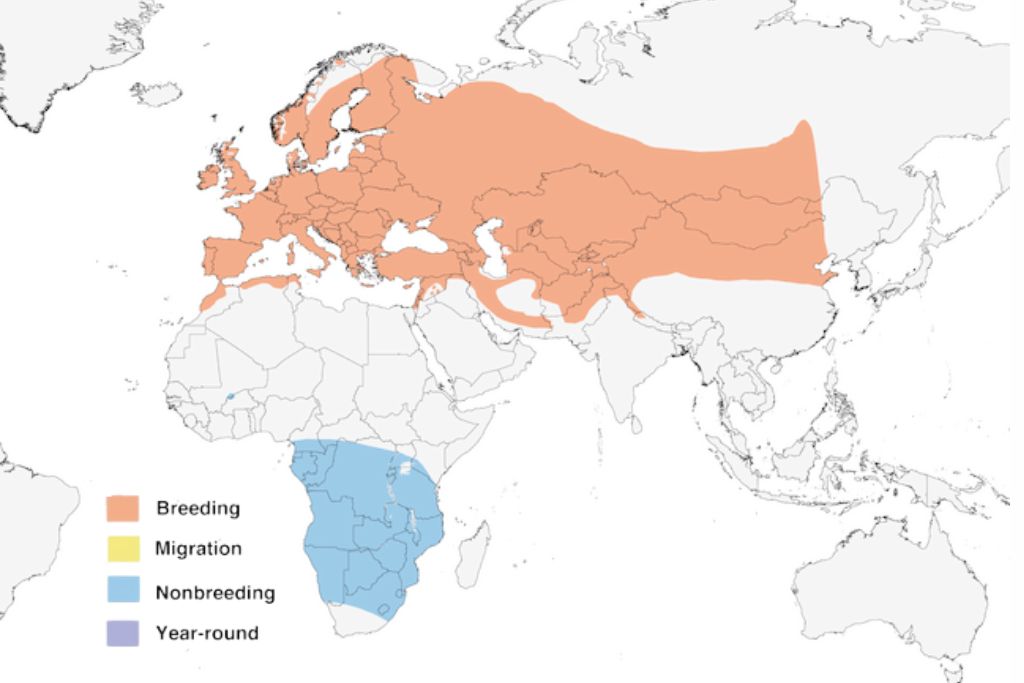
8. Mallard — 21,000 Feet
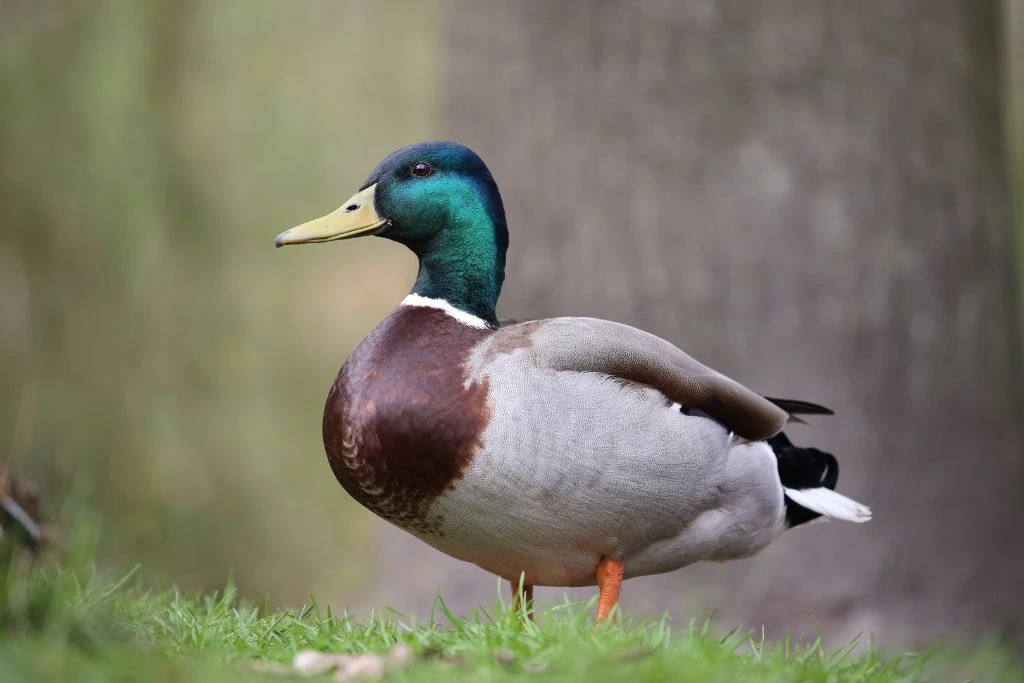
- Kingdom: Animalia
- Phylum: Chordata
- Class: Aves
- Order: Anseriformes
- Genus: Anas
- Species: A. platyrhynchos
Mallards (Anas platyrhynchos) are medium-sized ducks. The males (drakes) exhibit vibrant green heads, yellow bills, and gray bodies. Females (hens) have mottled brown plumage that provides excellent camouflage. Their large, pointed wings and powerful flight muscles allow them to migrate at 21,000 feet.
Their webbed feet make them excellent swimmers in shallow water, such as that found in wetlands. They also can take to the skies with agility. Their adaptability to various habitats makes them one of the most widespread duck species in the world. The mallard is common in urban and rural parks, marshes, and farmland.
These ducks typically construct their nests on the ground, hidden amongst tall grasses or near bodies of water. Mallard pairs form during winter and remain together until the eggs are laid. The mother lines the nest with plants and down feathers to warm the eggs. They lay an average clutch of 8 to 12 eggs and incubate them for about a month. Ducklings follow their mother to water shortly after hatching.
When feeding, mallards float with their heads submerged. They have a varied diet of plant matter, insects, small fish, and amphibians. These ducks are also highly migratory, traveling long distances to find suitable breeding and wintering grounds.
On average, a mallard will live 5 to 10 years, but some have lived up to 20.

9. Bar-Tailed Godwit — 20,000 Feet
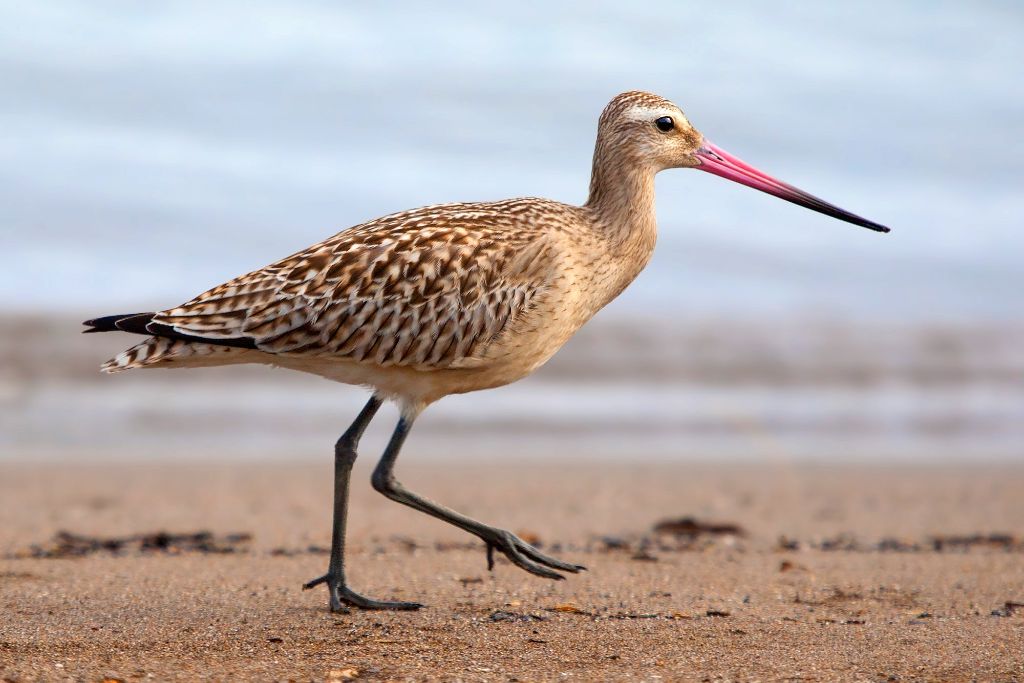
- Kingdom: Animalia
- Phylum: Chordata
- Class: Aves
- Order: Charadriiformes
- Genus: Limosa
- Species: L. lapponica
The spectacular bar-tailed godwit (Limosa lapponica) can fly up to 20,000 feet. They are medium-sized birds with long, straight bills and distinctive dark barring on their tails.
During the breeding season, the males develop a rusty-red coloration on their upperparts. They have long legs, ideal for wading and probing in mudflats, their primary feeding grounds. These birds have a wingspan of approximately 28 inches, enabling them to cover great distances during migration.
They can fly nonstop for large distances during migration, a remarkable adaptation. They have developed flight muscles and an oxygen-efficient respiratory system to enable flight. These birds eat sediment-buried invertebrates in mudflats, estuaries, and salt marshes.
Bar-tailed godwits breed in the Arctic tundra regions of Alaska and Siberia. They build their nests on the ground, often near bodies of water, using grasses, moss, and lichens. The female lays a clutch of 3 to 4 eggs, and both parents take turns incubating them. Chicks exit the nest a day after hatching and eat insects and tiny invertebrates.
They migrate from the Arctic to New Zealand and Australia. These journeys can cover over 7,000 miles, making them one of the longest migratory routes of any bird. They navigate using celestial cues, like the stars, and Earth’s magnetic field to find their way across vast oceans.
The average lifespan of a godwit is 15 to 20 years. Some have been recorded to live up to 30 years.
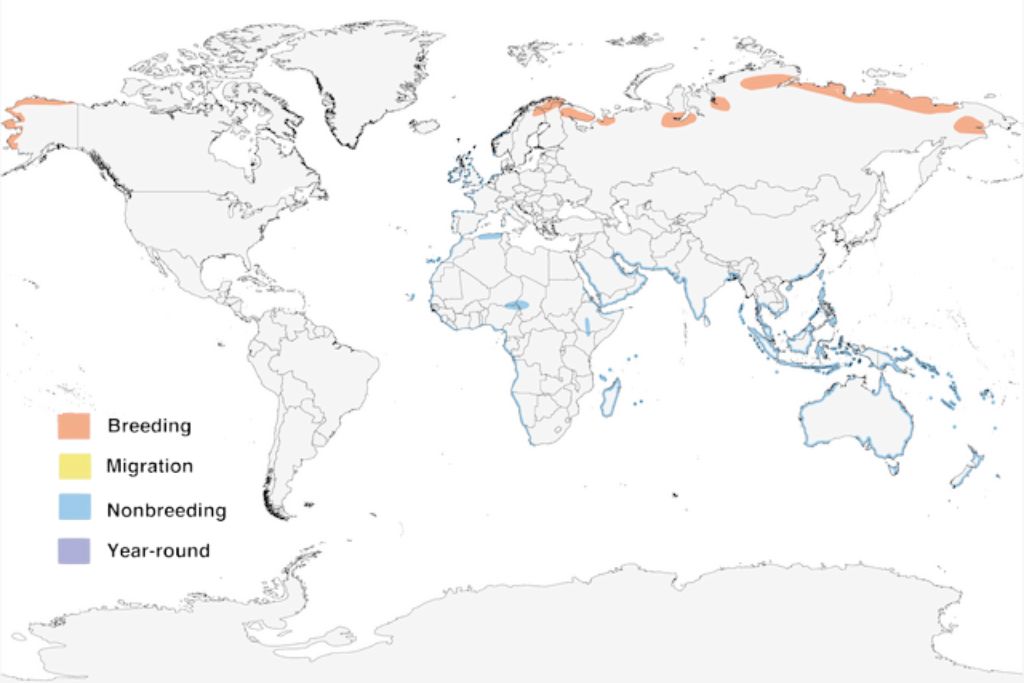
10. Greater White-Fronted Goose – 20,000 Feet
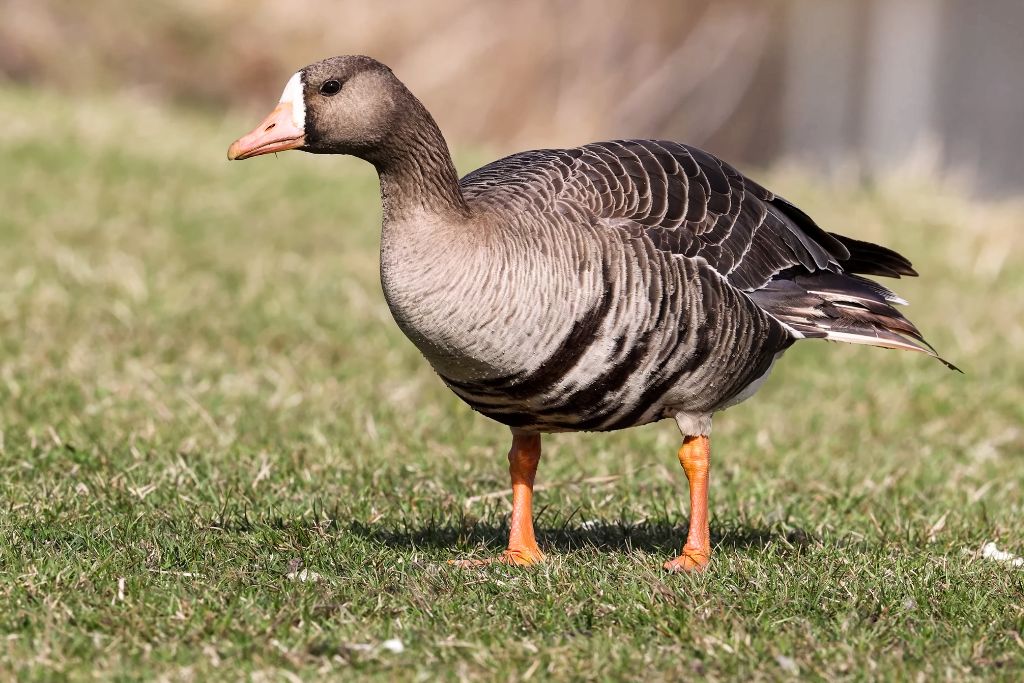
- Kingdom: Animalia
- Phylum: Chordata
- Class: Aves
- Order: Anseriformes
- Genus: Anser
- Species: A. albifrons
The greater white-fronted goose (Anser albifrons) is nicknamed the “speckle belly” due to its white front. It is a remarkable bird that can be found soaring high up in the sky, reaching altitudes of up to 20,000 feet. These geese have unique characteristics and adaptations that enable them to fly at such impressive heights.
One of the key characteristics of the greater white-fronted goose is its solid and powerful wings. These long and broad wings allow the bird to catch the updrafts and ride the air currents effortlessly.
Their streamlined body shape helps minimize air resistance, making their flight more efficient. These features combined give them the strength and agility to reach incredible altitudes.
They nest in the Arctic Tundra, with lots of food and room. To avoid predators, they nest atop mounds or small hills during the breeding season. They move thousands of miles and cross mountain ranges by flying high.
The greater white-fronted goose has a life expectancy of 10 to 12 years in the wild. During mating season, these geese build lifetime bonds and undertake complicated wooing and territorial rituals. They fly in vast flocks and communicate with different honking sounds.
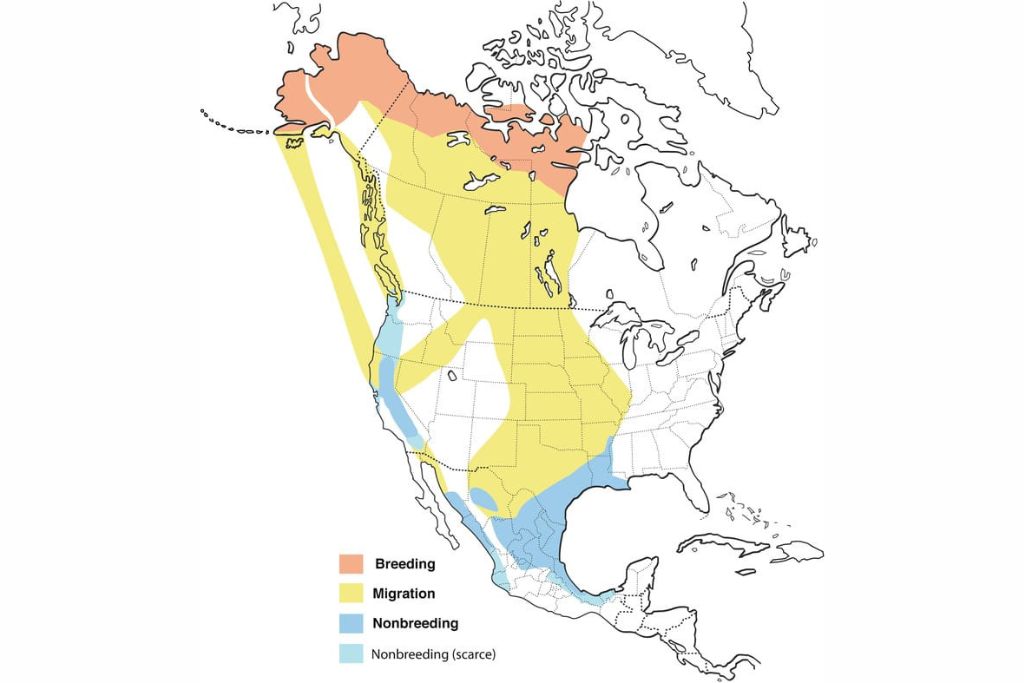
11. White Stork — 16,000 Feet
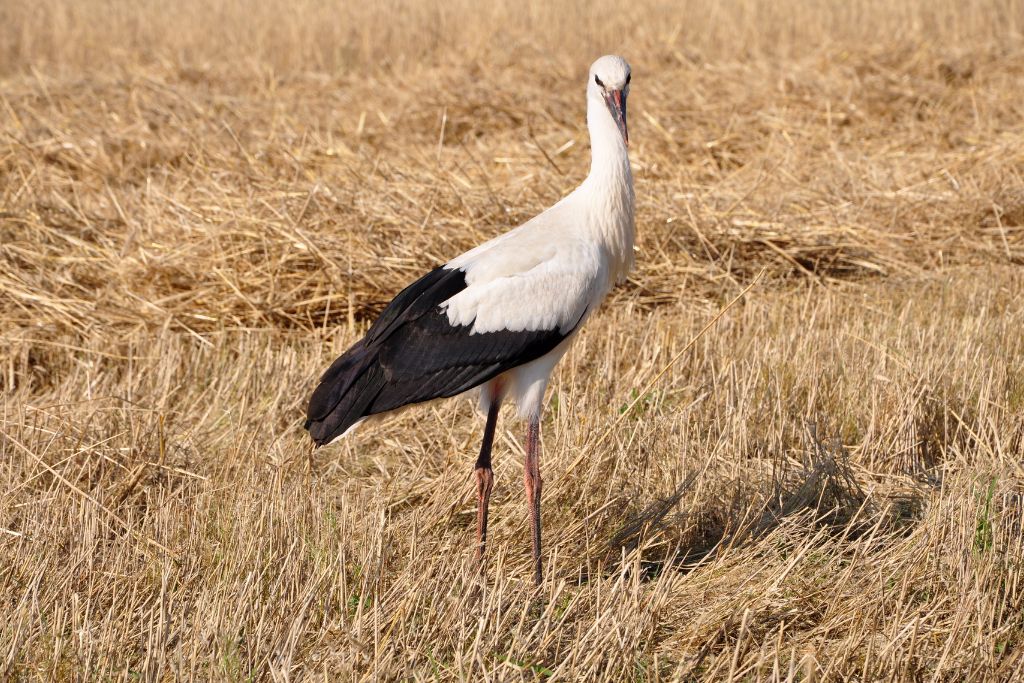
- Kingdom: Animalia
- Phylum: Chordata
- Class: Aves
- Order: Ciconiiformes
- Genus: Ciconia
- Species: C. ciconia
The beautiful white stork (Ciconia ciconia) can fly up to 16,000 feet on its long, slender legs. These graceful birds have many fascinating traits, adaptations, and behaviors that let them fly.
With a wingspan of around 6 feet, the white stork glides smoothly through the air. These features, combined with its exceptional eyesight, make it an efficient and skilled flier.
White storks are often found in open habitats such as grasslands, wetlands, and agricultural areas. They build large nests, often on chimneys or tall structures, and return to the same nest year after year. During the breeding season, they perform elaborate wooing displays, including bill-clattering and sky-pointing.
The life expectancy of a white stork can range from 20 to 30 years.
These birds are known for their remarkable migratory behavior. They embark on long-distance journeys, covering thousands of miles each year. They are said to have an intrinsic navigation mechanism. It helps them identify their wintering grounds in Africa and return to their breeding areas.
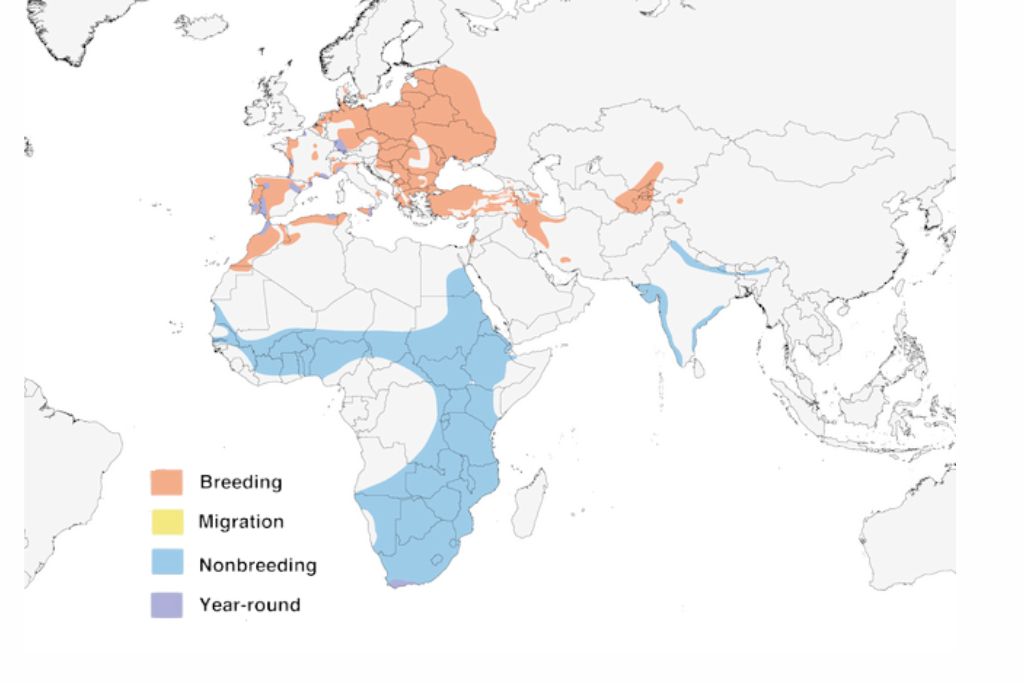
12. Andean Condor — 15,000 Feet
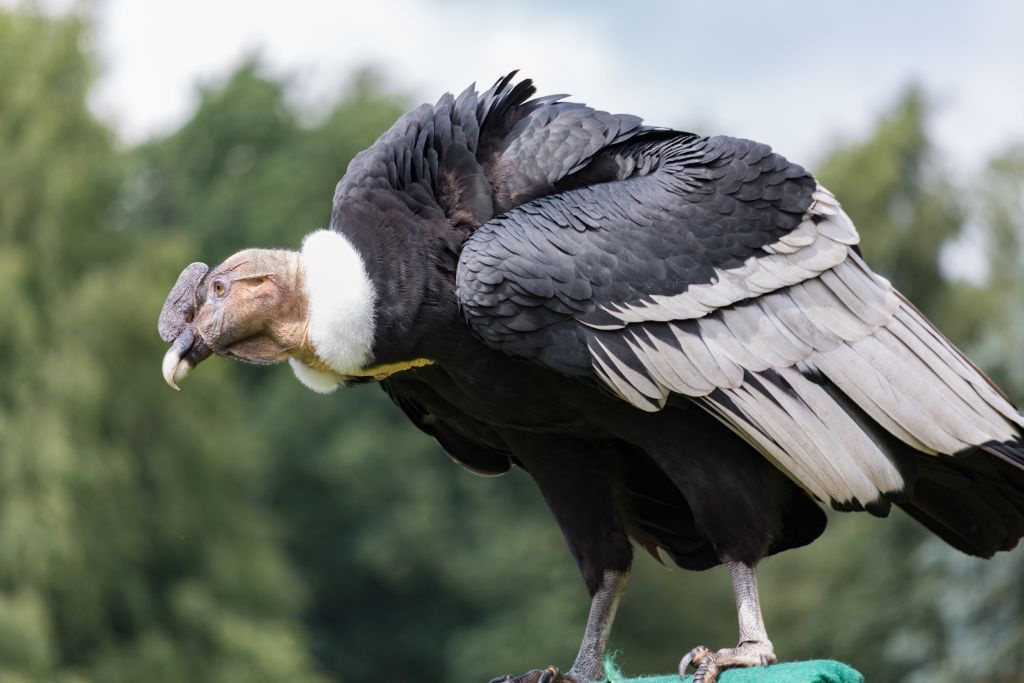
- Kingdom: Animalia
- Phylum: Chordata
- Class: Aves
- Order: Accipitriformes
- Genus: Vultur
- Species: V. gryphus
The Andean condor (Vultur gryphus) lives in the South American mountains. This fantastic bird can soar up to 15,000 feet with its 10-foot wingspan.
The dark feathers and white collar of the Andean condor help it glide gracefully over the mountain range. Its large wings provide ample surface area, aiding in lift and gliding. The condor can stay aloft for long periods by catching rising thermal air currents and saving energy.
These remarkable birds live in the steep Andes Mountains, where they have adapted to low oxygen levels. They use wind currents to roost and nest on rocky cliffs. Despite their size, Andean condors are agile enough to fly through narrow mountain passes.
One of the longest-lived bird species, they live 50 to 70 years. Males of these spectacular birds execute elaborate aerial displays to attract mates, soaring and diving with spread wings. They clean up the environment by eating carrion, making them remarkable scavengers.

FAQs
How High Can Birds Fly?
The highest a bird can fly varies among species, but generally, birds can reach altitudes of around 20,000 feet or even higher.
Can Birds Fly as High as a Plane?
Birds do not fly as high as commercial planes. While birds can reach impressive heights, commercial airplanes typically fly much higher. Most commercial flights fly between 30,000 and 40,000 feet to save fuel.
What is the Oldest Flying Bird?
The oldest flying bird known to science is the albatross. These majestic seabirds have long lifespans, with some individuals living for over 50 years. Among them, the Laysan albatross is the oldest known wild bird.
How High Can a Vulture Fly?
A vulture can fly at altitudes of up to 20,000 to 24,000 feet.

